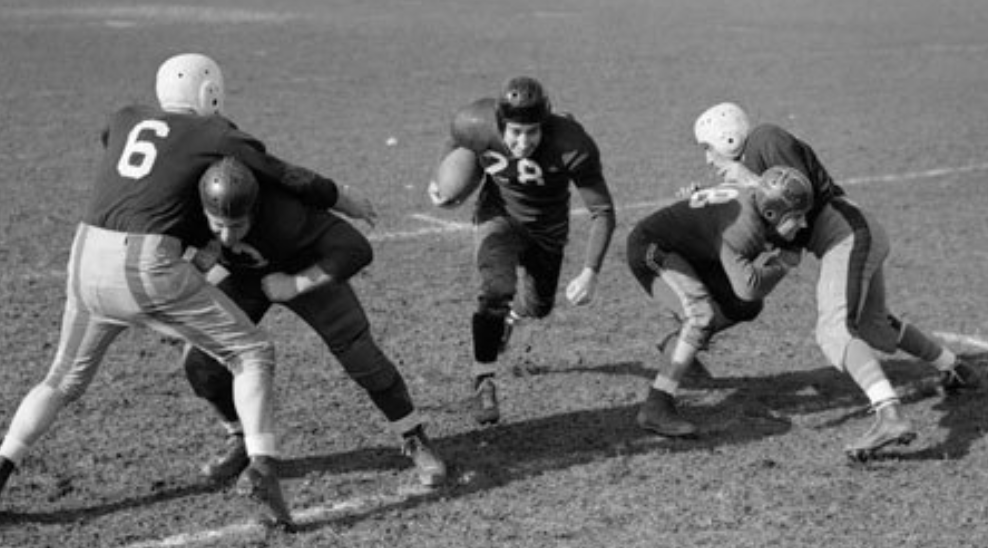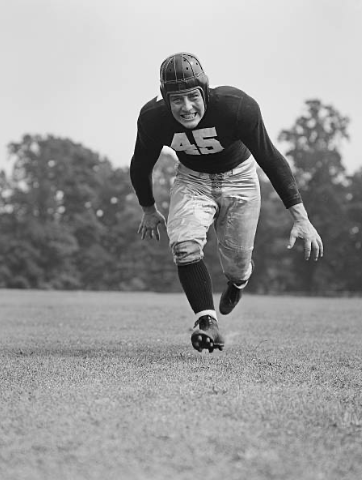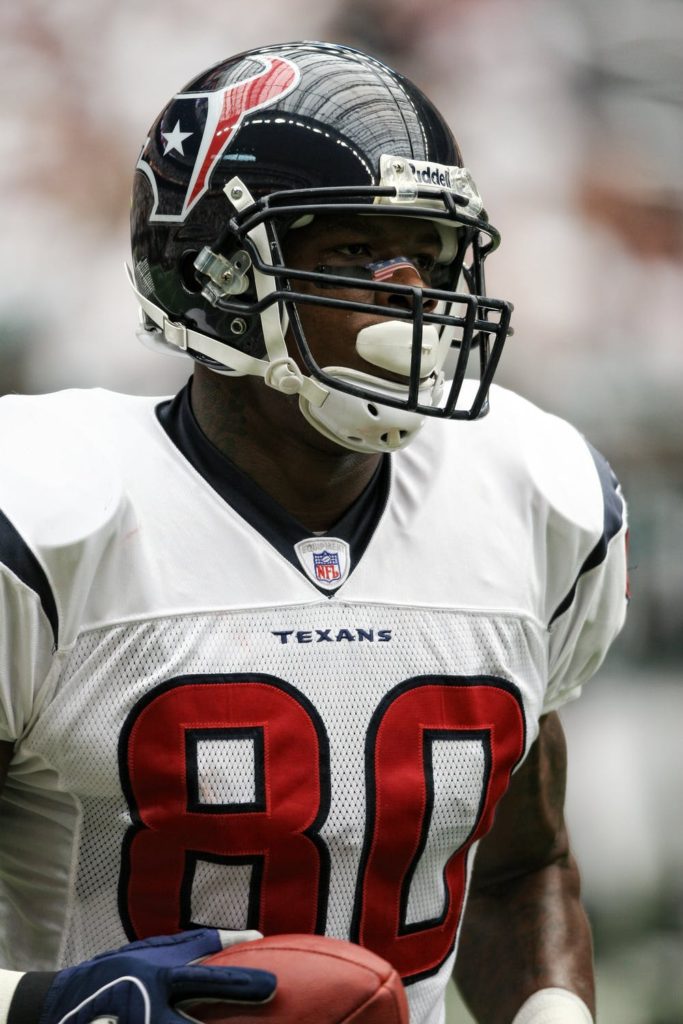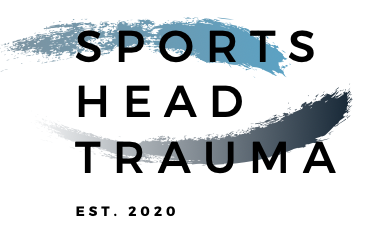
1890’s Soft Leather Skullcap
The first football “helmets” were made in the 1890’s. They were made from leather which meant that it would get really hot underneath, and the material made it difficult for players to hear (probably why most players didn’t wear it.)
Early 1900’s Leather Helmet
Through the first half of the 20th century, the leather helmets became more advanced. Straps were added to tighten the helmet down, ear holes were created so the player could hear the plays, padding was increased for shock absorption, and soft leather was replaced with hard leather that offered full head coverage. NFL Mandates Helmets in 1943
From Leather to Plastic in 1950’s
Plastic helmets were introduced in the 40’s but it wasn’t until the end of the decade that they replaced leather helmets. Plastic helmets manufactured by company John T. Riddell, were adopted by the NFL around this time (most of the helmets you see today are still manufactured by Riddell).
50’s Hard Plastic with Introduction of Single Bar Face Mask
It was common for players to get elbows to the face resulting in teeth being knocked out, bloody noses, and bruised eyes. To help protect them, a single bar that ran across the mouth area was officially added in 1955.
1960’s Double bar Face Masks
In the 1960’s double bar face masks became increasingly popular, and players were able to customize their helmets for a safer and more comfortable fit.


The Introduction of Metal Helmets and Evolution of Face Masks
Metal helmets were introduced at the end of the 1960’s and are still used today (but much more advanced). Riddell also created full face masks with horizontal and vertical bars for increased protection. They also added air bladders custom fitted to each player’s head, that inflated during impact. Visors were introduced in the 80’s to protect the players’ eyes (optional).
Early 2000’s until today
Riddell’s Revolution Helmet Model becomes the standard helmet used in football after a major remodel. NFL bans single bar face masks in 2004. In 2007, Schutt Sports, another helmet manufacturer created the Schutt ION 4D, in response to people’s concerns that the Revolution was not safe enough. In 2015, Riddell added shock detecting sensors in their helmets as more people became aware of the short and long term risks associated with mTBI and RHI.
Today’s Standards
The NFL allows players to choose their helmets and designs but they have to be approved by the National Operating Committee on Standard for Athletic Equipment (NOCSAE).
To read more about how much American football helmets have changed in the past century, click the links below! Let me know which one you like and what team it belongs to.
https://jacksonjournal.news/38320/lifestyle/sports-jacksonjournal/evolution-of-football-helmets/
https://2ndskull.com/blogs/news/evolution-of-football-helmets
Disclaimer: The information provided by Sports Head Trauma is solely for educational purposes and raising awareness of mTBI & TBI. Sports Head Trauma does not provide medical advice, and the information from this website should not be used to diagnose, manage, or treat a head injury. If you have sustained a head injury or think you have a concussion, seek medical help immediately. If you need medical advice, diagnosis, or treatment information, please talk to a healthcare professional or a physician. This website is not meant to create a physician-patient relationship, or any type of confidential relationship. The information provided by Sports Head Trauma should not be substituted for medical advice, diagnosis, or treatment information from a healthcare provider, as the sole purpose of the website is for informational purposes. In the event of an emergency, always speak to a medical professional or call 911.
